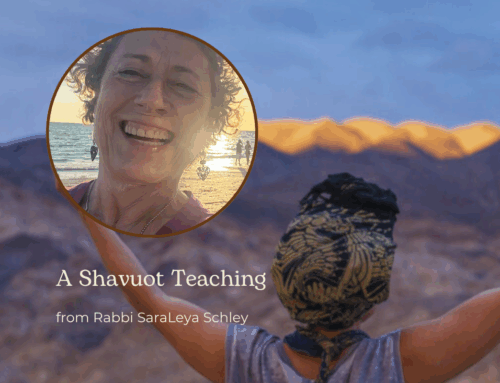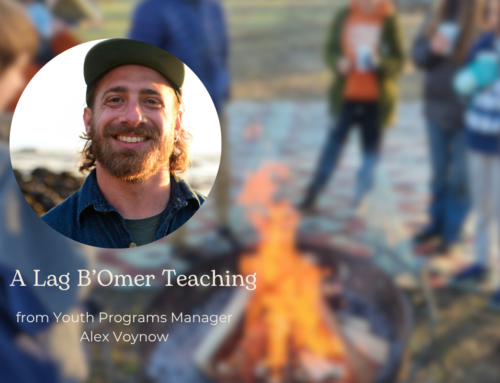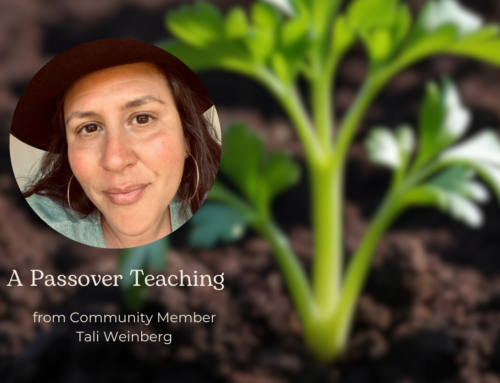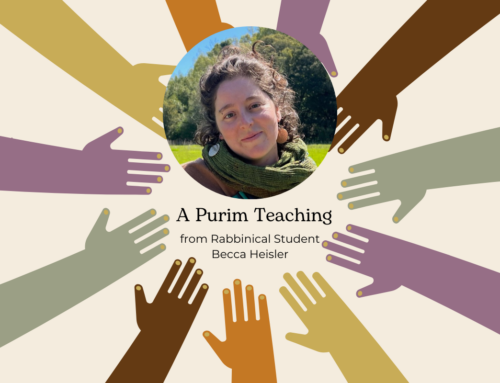Reconnecting to Our Earth-Based Roots: Teshuva for Our Generation
December 27, 2010 | Originally published in PresenTense
Our contemporary society has become radically disconnected from nature. Richard Louv, author of Last Child in the Woods: Saving our Children from Nature-Deficit Disorder, explains that modern society suffers from an epidemic of nature-disconnection. “Our society teach
At the turn of the 20th Century, the early labor Zionist A.D. Gordon understood exile to be the very type of nature disconnection that Louv writes about today. More than separation from the political state of Israel, Gordon describes Jewish exile in the Diaspora as a “rift between the Jew and nature,” reflecting a broader human condition that must be healed. Today the majority of the Jewish population lives in A.D. Gordon’s “exile” because we live in urban centers across North America and Israel, without meaningful relationships to nature.
As humanity becomes increasingly aware of the looming ecological issues we all face in global climate change, water scarcity and food insecurity – to name just a few – there is a growing realization that we must care for Creation as a means of self-preservation. The impulse to engage in environmental action begins with a spiritual connection to nature. Thus, we must do teshuva in our relationship to nature.
Teshuva, most commonly understood as the process of repentance we undergo during Yom Kippur, also connotes spiritual “return.” As A.D. Gordon explains, “Teshuvah, ‘return’ back to G-d,’ really means human’s return to nature. This is because teshuvah means going back to one’s point of origin, one’s source, coming back home after a period of absence.”
Reaching back over 3,000 years, Judaism contains ancient teachings and traditions that can help us return to spiritual harmony with the earth. “In its aboriginal form Jewish spirituality has less to do with religion that it does with direct, uninhibited experience with Creator through Creation,” writes Rabbi Gershon Winkler in Magic of the Ordinary. “What was once a holistic spirit path that encompassed all the nuances and dynamics of the spirituality of earth and body has over the centuries mutated into a parochial focus on religion as an institution by itself.” At its core, Rabbi Winkler teaches, Judaism “emphasizes the sacredness of the earth.” Part of our teshuva, then, is to reclaim our earth-based traditions as a means of returning into harmony with Creation.
As a starting point, the Torah teaches that we humans (Adam) are made from the very fabric of nature, the earth (Adamah). (Genesis 2:7). To create Adam, last in the order of Creation, G-d turns to all that It had created prior to humans and proclaimed: “Let us make Adam in our image, after our likeness.” (Genesis 1:26). “In creating the human, G-d incorporated all of the attributes of all the animals, plants, and minerals that had been created up to this point. In each of us, then, are the attributes and powers of all the creations of the earth,” writes the seventeenth century Rabbi Cordovero (Cordovero, Shi’ur HaKomah, Torah, chapter 4). To return to ourselves, we must return to a direct relationship with nature.
Our ancestors teach us that alone in nature we can discover deep truths about our lives. Moses encounters G-d in the burning bush with a vision to lead his people to freedom; Jacob wrestles an angle all night earning his name Israel. Even just a few hours of intentional nature time can be profoundly healing. As the co-director of Wilderness Torah, which awakens and celebrates the earth-based traditions of Judaism, I guide people through solo nature encounters. “I’m reminded that spending time in nature revitalizes me and I return home with new hope,” reflected Tom Levy, who participated in a daylong program after a sudden and traumatic late-career lay-off. “The mirror of nature taught me that life is not over for me. I’m a leaf on the great tree of Creation and I have a lot of living to do.”
Teshuva with nature does not have to be a solo experience, however. Judaism provides an incredibly rich set of traditions that are designed to align our communities with nature. Our festivals, for example, celebrate seasonal changes and hallmark moments in the agricultural cycle. At Passover when we tell our liberation story, we also celebrate Spring and the first grain harvest. At Sukkot when we recall our desert wanderings, we also hail the ingathering of the Fall harvest and begin praying for autumn rains to nourish the cycle again. Every seven years, e are taught to observe the schmita (“release”), a year-long Shabbat for the land when we cease working the land to provide a respite from our environmental impact. (Leviticus 25:4).
We are taught that when we honor these cycles, we will receive the seasonal rains that nourish fruit trees and fields of grain. (Leviticus 26:4). But if we fail to do so, the Torah describes the potential that our “skies will turn to iron and the earth to copper… and the earth will not yield produce nor the trees fruit.” (Leviticus 26:19-20). You may recoil from this part of the Torah as a threat from a vengeful G-d. But, what if the Torah is merely presenting the potential consequence of our disconnection from nature? Might “iron skies” be an ancient warning about global climate change? If so, we may begin to understand the importance and the opportunity for meaningful teshuva in our relationship with the natural world.
At Wilderness Torah, we provide one approach to this teshuva through an annual cycle of land-based pilgrimage festivals. At Passover in the Desert, we create a rustic, wilderness village near Death Valley National Park for five-days to honor Spring and our liberation. At the Sukkot on the Farm Festival, we gather community of all ages on an organic farm for four-days to immerse ourselves in the essence of the harvest and to awaken our ancient water-drawing ritual. “When we come together as a tribe on the land, we shed our urban façade and open up to each other in profound ways. Here under the sukkah, we gather as equals,” explained Rebecca Redstone, who attended Sukkot on the Farm with her two daughters.
Rebecca recalls the full moon rising over the redwood skyline, the Hebrew melodies soothing her from inside the sukkah, and a deep trust that her children are safe even when out-of-sight. “When we leave the car, the house and the technology behind, eat food from the fields, sleep on the ground, and get into nature’s rhythm… the tension seems to leave and true joy comes. I feel like I have a sense of what it was like for my ancestors.”
Jews are known as the people of the book. Yet Judaism at its roots is an earth-based tradition. As environmental concerns become more widespread, and our communities seek innovative avenues to invigorate our lives and our communities, perhaps the way forward is to pause and take a look back and reconnect to our ancient roots.





